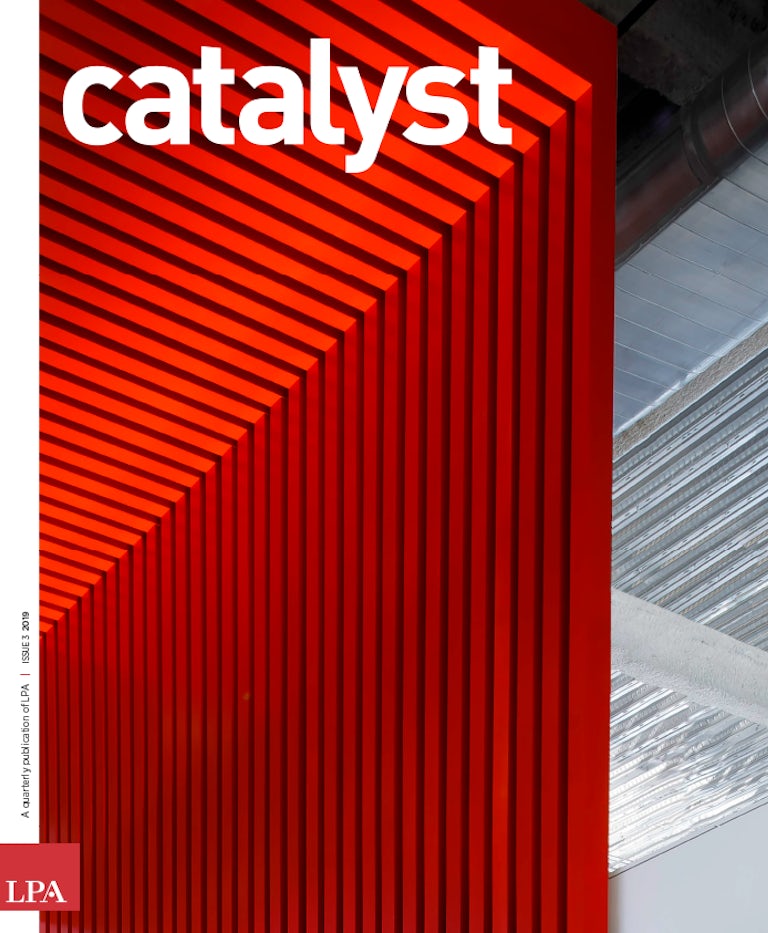In the healthcare industry, the cost of everything from technology to pharmacology continues to skyrocket. Our challenge as architects and designers is to find ways to make our piece of the healthcare puzzle more affordable, so providers can offer more care for their communities.
One answer: progressive design-build.
Other industries are embracing progressive design-build (PDB) as a way to control costs and create a better, more collaborative design process. In a PDB project, instead of setting a complete budget at the start of the process, the pricing and procurement is developed on a progressive, step-by-step basis, focused on finding the best value-based answers at every turn. When the design is between 50 and 75 percent complete, the design-builder will issue a Guaranteed Maximum Price (GMP).
This offers clients many advantages. While traditional design-build is price-based, PDB is value-based, and the design-builder is selected primarily based on qualifications, and in some cases, before the design has been developed. The PDB process can reduce procurement time and costs, with the client involved in every big decision. The designers, engineers, contractors, trade partners, local agencies and the client work together at every phase, dealing with issues as they arise and analyzing solutions before putting a final price on the work.
This gives the client more control of a project. They can reject an expenditure without significant project delays. With PDB, you perform most of your homework before you finalize the budget, so you have a better chance of designing to and meeting the budget goals. The process limits and mitigates the potential risks earlier in the design phase, resulting in a GMP that more accurately reflects the actual cost to construct the project.
For the healthcare industry, this is essential. Our clients tell us they need to build projects better, faster and cheaper.
PDB addresses each concern. By spending more time upfront and involving more stakeholders in the absolute transparent process, the result is a better-quality project. If you do your homework, there are fewer surprises and the team can expedite the delivery part of the project and turn it over more quickly. It’s also cheaper because the collaboration has predetermined the most cost-effective, durable and least maintenance-intensive course for the project, which will limit expenditures and surprises.
At LPA, we utilize the Choosing by Advantage (CBA) decision-making system, which allows for visual and transparent decision making during the PDB. This approach allows the project team to emphasize project values to clients and their stakeholders. Decision makers can reach consensus, focus on outcomes, and understand all of the factors to consider during the objective decision-making process.
These advantages are essential in the healthcare industry, where most projects include far more financial risk and complexity than the typical construction project. Healthcare facilities always require a level of detail and complexity not found in typical jobs. In an existing facility, the building is occupied with patients, 24/7, 365 days a year. They never have a day or even an hour off. Major infection control precautions are necessary. There are patients who are sensitive to vibration, noise, dust and odors that accompany construction sites.
These issues can create costly problems during a traditional design-build project.
Contractors show up to work, get prepped, set up and start to work, only to be told by a doctor that the work must stop. The entire team of 20 or 30 people packs up and goes home, but charges for the whole day. Every project also includes thorough regulatory oversight, focused on every detail of the job. Get the work wrong and it will have to be done again.
Clients tell us that even when they get a GMP through a prescriptive two-step traditional design build process from a contractor, they typically end up with a wide range of change orders due to unforeseen conditions. They often spend 50 percent more than the original bid because of all the things they weren’t aware of when writing the initial contract.
That is not a sustainable approach and it’s not an effective way for the healthcare industry to do business. Providers need a better way to manage risk and control their costs. Other sectors, including school districts and civic groups, have been using progressive design build for several years, but the healthcare industry has adopted a wait-and-see attitude, due to their uniquely challenging construction environment.
That is starting to change. More and more providers are recognizing that traditional design-build costs unnecessary time and money. A good example is the University of California system, which has been pushing for PDB as a hedge against overruns. They recognize the need for involvement of all the stakeholders on the front end. They know that collaboration with the architects, engineers and contractors is essential to control costs and create more efficient facilities.
That’s why they’re going to progressive design build and that’s why we advocate it.
Muhsin Lihony is the Director of Healthcare at LPA, helping expand the firm’s position in the rapidly-changing healthcare market.
This story originally appeared in Catalyst Issue 3 2019. Subscribe today to receive Catalyst, a quarterly publication that takes a deep dive into design ideas, industry leaders and initiatives.
















